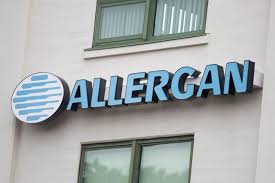Source: prevention.com
Pharmaceutical company Allergan has issued a worldwide recall of its Biocell textured breast implants and tissue expanders after the products were linked to a rare form of cancer. The recall was based on the recommendation of the U.S. Food and Drug Administration (FDA).
“Allergan is taking this action as a precaution following notification of recently updated global safety information concerning the uncommon incidence of breast implant-associated anaplastic large cell lymphoma (BIA-ALCL) provided by the U.S. Food and Drug Administration,” the company said in a press release, before stressing that “patient safety is a priority” for Allergan.
Allergan is specifically recalling the following products:
- Natrelle Saline-Filled breast implants
- Natrelle Silicone-Filled breast implants
- Natrelle Inspira Silicone-Filled breast implants
- Natrelle 410 Highly Cohesive Anatomically Shaped Silicone-Filled breast implants
- Natrelle 133 Plus Tissue Expander
- Natrelle 133 Tissue Expander with Suture Tabs
Textured breast implants aren’t as common as their smoother counterparts, the FDAsays, and the represent less than 5 percent of all breast implants sold in the U.S.
What are the symptoms of BIA-ALCL?
These particular implants have been linked to breast implant-associated anaplastic large cell lymphoma, a rare form of non-Hodgkin’s lymphoma, according to the FDA. This is not a breast cancer—it’s a cancer of the immune system. In most cases, BIA-ALCL is detected in scar tissue and fluid near the implant. However, it can spread throughout a person’s body and become deadly.
The FDA released new data with the recall, noting that there have been 573 cases globally of BIA-ALCL and 33 patient deaths from the disease. “Specifically, of the 573 unique cases of BIA-ALCL, 481 are attributed to Allergan implants. Of the 33 patient deaths the FDA is reporting today, 12 of the 13 patients for which the manufacturer of the implant is known, are confirmed to have an Allergan breast implant at the time of their BIA-ALCL diagnosis,” per the FDA statement.
The FDA also says that is own analysis found that the risk of developing BIA-ALCL in patients who have Allergan Biocell textured implants is six times the risk of BIA-ALCL with textured implants from other companies that sell their implants in the U.S.
While the implants and tissue expanders have been recalled, the FDA actually doesn’t recommend that they be removed in patients who have them “due to potential risks,” the agency says.
Instead, the FDA recommends that doctors and women with the implants be aware of the symptoms of BIA-ALCL—including swelling, pain, or lumps in the breast or armpit due to excessive fluid buildup—and monitor the area around their implants for any changes. If you notice the signs of BIA-ALCL, call your doctor.
What happens next if you have these Allergan implants?
It’s understandably scary to know that your implants can cause an increased risk of cancer, which is why it’s a good idea to call your doctor to have a “discussion” if you have these implants, says Daniel Maman, MD, a board-certified plastic surgeon with 740 Park Plastic Surgery.
If you want the implants out ASAP, Dr. Maman just recommends keeping this in mind: “It is not difficult to remove or replace breast implants, but it is still a surgical procedure that comes with potential risks and downtime.”
If you opt for surgery, “the implants can be completely removed, with no replacement, or the woman can choose to replace them with new implants,” says Constance Chen, MD, a board-certified plastic surgeon and breast reconstruction specialist.
If you want the implants out without replacing them, your breasts may look deflated because the skin can get stretched out, Dr. Chen says. However, this can go away with time, although women sometimes request a breast lift or fat grafting to help with the appearance of their breasts, she says. Natural tissue breast reconstruction, which involves using skin and fat from another part of your body like your lower abdomen or inner thighs to recreate the breasts, is also an option, she says.
